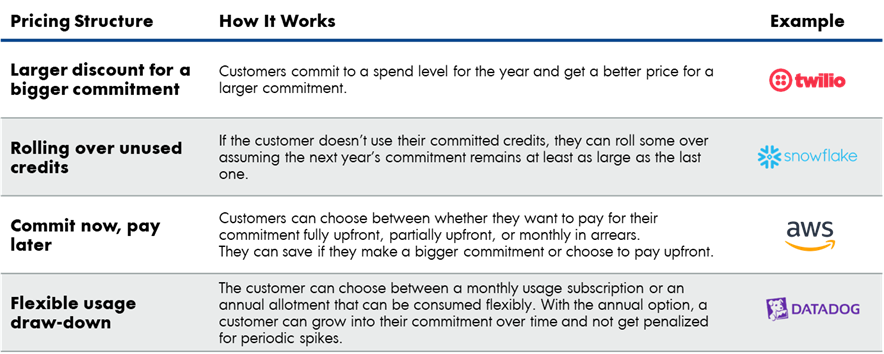How to overcome the challenges of switching to usage-based pricing
- Why do SaaS companies with usage-based pricing grow faster?
- Subscription-based pricing is dead: Smart SaaS companies are shifting to usage-based models
The usage-based pricing model almost feels like a cheat code - it enables SaaS companies to more efficiently acquire new customers, grow with those customers as they're successful and keep those customers on the platform.
Compared to their peers, companies with usage-based pricing trade at a 50% revenue multiple premium and see 10pp better net dollar retention rates.
But the shift from pure subscription to usage-based pricing is nearly as complex as going from on-premise to SaaS. It opens up the addressable market by lowering the purchase barrier, which then necessitates finding new ways to scalably acquire users. It more closely aligns payment with a customer's consumption, thereby impacting cash flow and revenue recognition. And it creates less revenue predictability, which can generate pushback from procurement and legal.
SaaS companies exploring a usage-based model need to plan for both go-to-market and operational challenges spanning from pricing to sales compensation to billing.
Selecting the right usage metricThere are numerous potential usage metrics that SaaS companies could use in their pricing. Datadog charges based on hosts, HubSpot uses marketing contacts, Zapier prices by tasks and Snowflake has compute resources. Picking the wrong usage metric could have disastrous consequences for long-term growth.
The best usage metric meets five key criteria: value-based, flexible, scalable, predictable and feasible.
- Value-based: It should align with how customers derive value from the product and how they see success. For example, Stripe charges a 2.9% transaction fee and so directly grows as customers grow their business.
- Flexible: Customers should be able to choose and pay for their exact scope of usage, starting small and scaling as they mature.
- Scalable: It should grow steadily over time for the average customer once they've adopted the product. There's a reason why cell phone providers now charge based on GB of data rather than talk minutes - data volumes keep going up.
- Predictable: Customers should be able to reasonably predict their usage so they have budget predictability. (Some assistance may be required during the sales process.)
- Feasible: It should be possible to monitor, administer and police usage. The metric needs to track with the cost of delivering the service so that customers don't become unprofitable.
Enterprise customers often crave price predictability for annual budgetary purposes. It can be tough for traditional legal and procurement teams to wrap their heads around a purchase with an unspecified cost. SaaS vendors must get creative with different usage-based pricing structures to give enterprise customers greater peace of mind.

Image Credits: Kyle Poyar
Customer engagement software Twilio offers deeper discounts when a customer commits to usage for an extended period. AWS takes this a step further by allowing a customer to commit in advance, but still pay for their usage as it happens. Data analytics company Snowflake lets customers roll over their unused usage credits as long as their next year's commitment is at least as large as the prior one.
Handling overagesNobody wants to see a shock expense when they've unknowingly exceeded their usage limit. It's important to design thoughtful overage policies that give customers the feeling of control over how much they're spending.